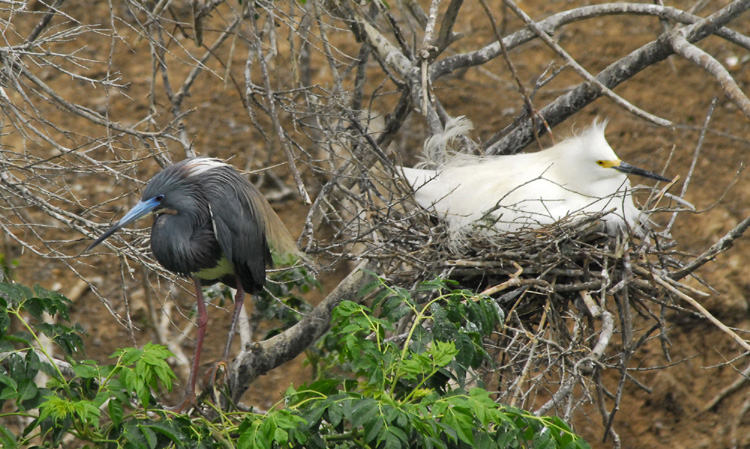Buying a Stamp is something that will benefit a lot more than ducks. Many shorebirds, long-legged waders and wetland and grassland songbirds depend on habitat derived from Stamp purchases, habitat that is wisely invested in Refuges and WPAs. The two species of long-legged waders shown here are just two of the non-waterfowl species that benefit from Stamp funds.

The Tricolored Heron, on the left, is a species that ranges along the Atlantic coast from New Jersey through Florida and across the Gulf coast westward through coastal Texas. This graceful and elegant heron of the Southeast is found at many of the NWRs that have been created along our Atlantic and Gulf coasts.The Snowy Egret, seen on the nest on the right, has an overlapping range, but it extends even farther inland in the southeast and also in California and large parts of the interior West.
The Snowy Egret was one of the major victims of the feather-trade, pursued for the species’ lovely, long, and filmy feathers, called “aigrettes.” The adults, in impressive breeding plumage, were often slaughtered on their nests, with the helpless young left to die. The birds were persecuted across the southeast until the Lacey Act of 1900, the Migratory Bird Treaty Act of 1918, and the growth of a real Refuge System made the country safe for these birds.
Indeed, NWRs have been immensely important for herons and egrets, especially when considering the acquisition of expansive marshes. The next time you see one of these birds on a coastal wetland or interior swamp, remember that refuges have saved these birds for current and future generations and that the investment of Stamp dollars helped make that security possible.